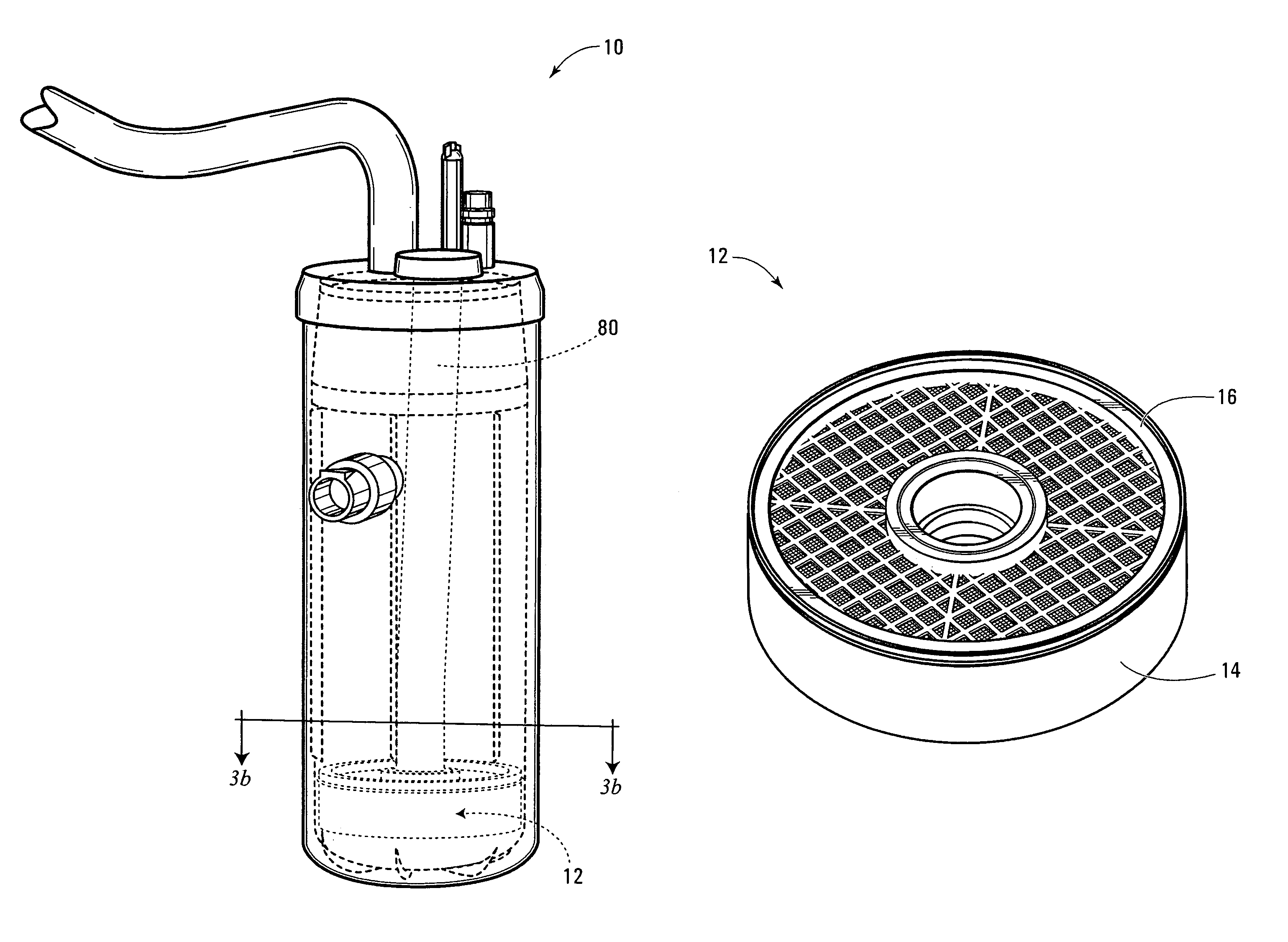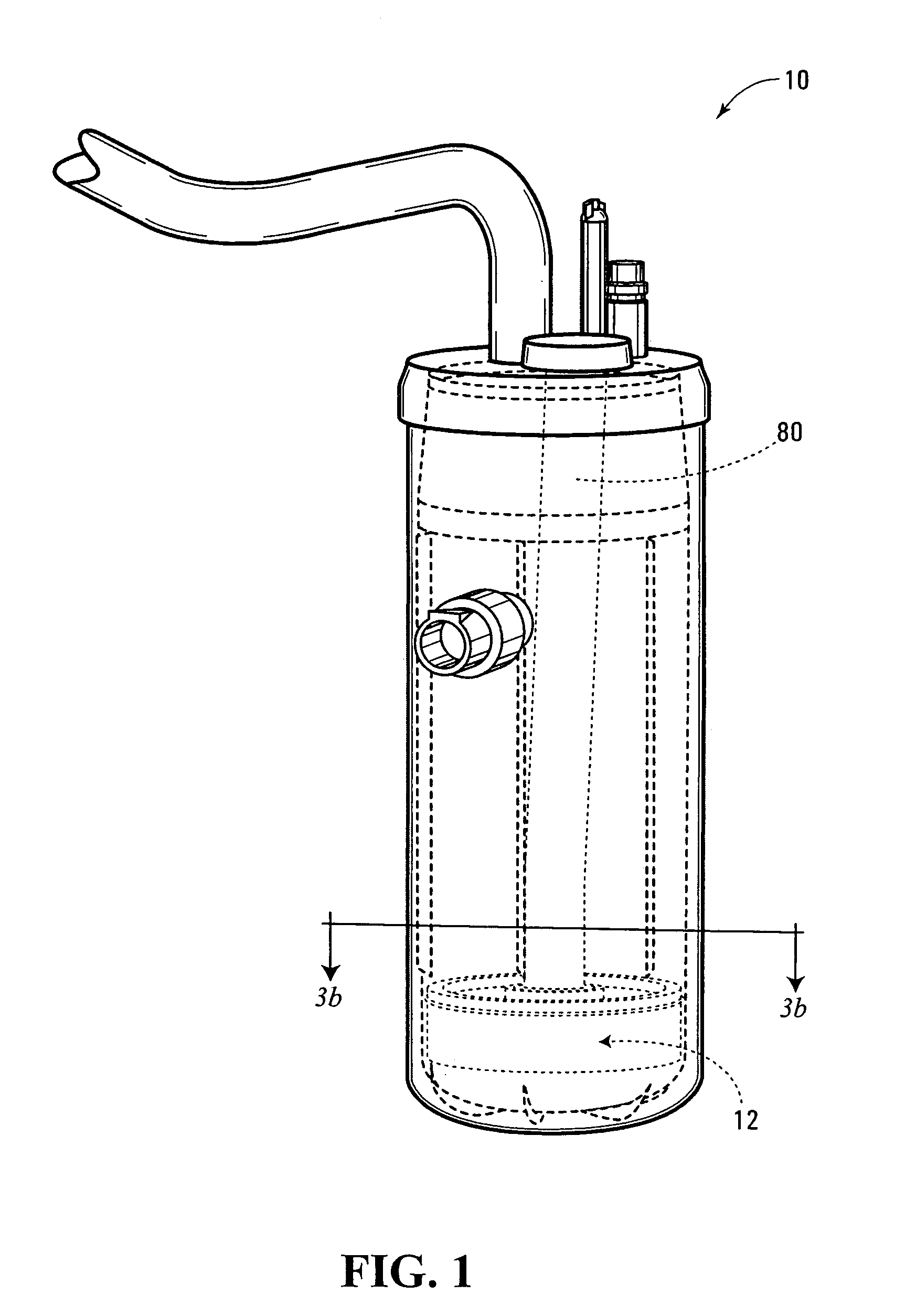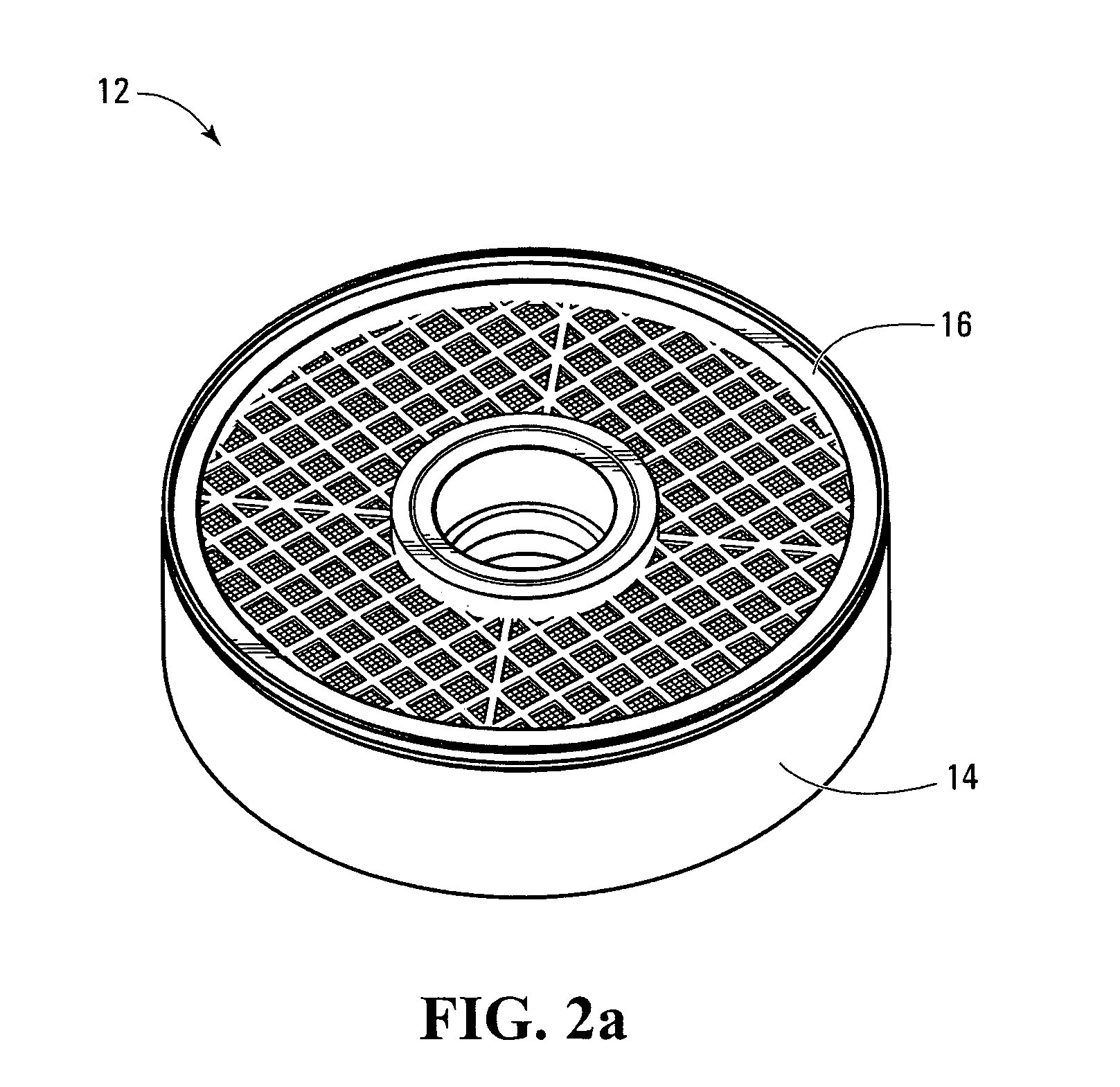Desiccant cup with integral filter
a desiccant cup and filter technology, applied in the field of desiccant containers, can solve the problems of reducing system efficiency, affecting the efficiency of air conditioning systems, damage to compressors, etc., and achieve the effects of reducing noise, and reducing time and cos
- Summary
- Abstract
- Description
- Claims
- Application Information
AI Technical Summary
Benefits of technology
Problems solved by technology
Method used
Image
Examples
Embodiment Construction
[0027]FIG. 1 shows a representative accumulator or refrigerant storage device 10 for an air conditioning (or heating, ventilation and air conditioning (HVAC)) system of a vehicle. The accumulator 10 as shown in FIG. 1 has certain features omitted for simplicity and certain features inside the accumulator 10 are shown by dotted outline. A desiccant container 12 according to an aspect of the present invention is shown roughly in position within the accumulator 12, for example purposes.
[0028]FIG. 2a is a perspective view of the desiccant container 12. The desiccant container 12 has two portions, namely an open body or cup portion 14 and a lid 16. FIG. 2b is a perspective view of the lid 16. FIG. 2d is a perspective view of the open cup 14.
[0029]As perhaps best seen in FIG. 2b, the lid 16 is a one-piece casting. The lid 16 is a generally circular, one-piece casting, having a generally circular outer or peripheral boundary 20 and a concentric, generally circular, inner boundary 22, formi...
PUM
| Property | Measurement | Unit |
|---|---|---|
| diameter | aaaaa | aaaaa |
| lattice | aaaaa | aaaaa |
| structure | aaaaa | aaaaa |
Abstract
Description
Claims
Application Information
 Login to View More
Login to View More - R&D
- Intellectual Property
- Life Sciences
- Materials
- Tech Scout
- Unparalleled Data Quality
- Higher Quality Content
- 60% Fewer Hallucinations
Browse by: Latest US Patents, China's latest patents, Technical Efficacy Thesaurus, Application Domain, Technology Topic, Popular Technical Reports.
© 2025 PatSnap. All rights reserved.Legal|Privacy policy|Modern Slavery Act Transparency Statement|Sitemap|About US| Contact US: help@patsnap.com



